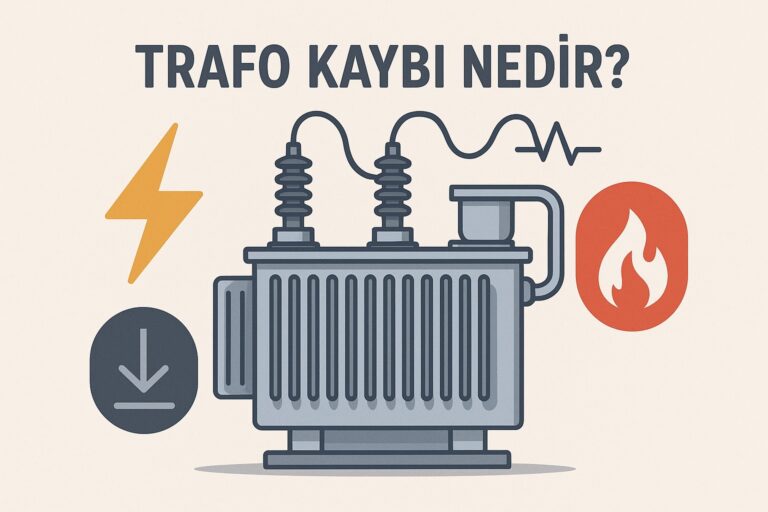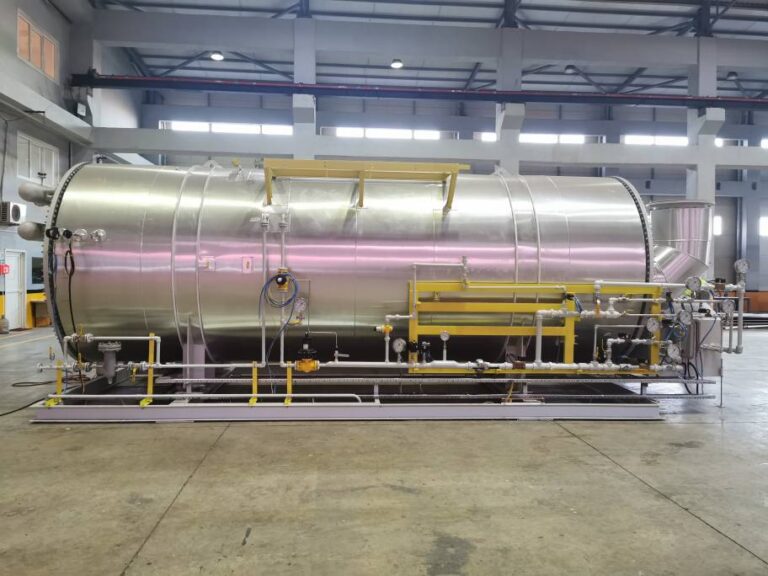What is Transformer Loss? Causes and Solutions for No-Load and Load Losses
Transformers play a critical role in transmitting and distributing electrical energy efficiently. However, during this process, certain energy losses are...
Devamını Oku

A switch is a core component in modern network infrastructures, designed to direct data packets efficiently from one device to another within a network. Unlike simpler devices that flood data to all endpoints, a switch identifies the correct destination and ensures that only the intended recipient gets the information. This intelligent forwarding improves overall performance, minimizes traffic congestion, and enhances data security. Questions like what does switch mean and what is switch are essential when understanding the fundamentals of efficient and secure data transmission in both home and enterprise environments.
Switches operate at the data link layer of the OSI model and sometimes extend to the network layer in advanced models. Their job is to map each connected device’s MAC address and maintain a dynamic forwarding table to route data precisely. This makes them indispensable for optimized communication across the network. In more advanced network solutions, such as those offered by engineering firms like Adatech, switches serve as the switch key to centralized data control, supporting complex setups like VLANs, load balancing, and traffic segmentation. With a switch in place, modern digital infrastructures achieve higher stability, faster communication, and better scalability.
What is a Switch? Basic Definition
A switch is a network hardware device that connects multiple devices within a local area network (LAN) and facilitates communication between them by forwarding data only to the device intended to receive it. Unlike a hub that sends data to all connected ports, a switch uses MAC addresses to identify the correct destination, thus ensuring more secure and efficient data transfer. In this context, the answer to what does switch mean is that it’s a smart communication hub that manages traffic flow and reduces unnecessary data broadcasts across the network.
Switches serve a foundational role in both small-scale office setups and large industrial infrastructures. They eliminate data collisions and optimize communication speed by creating dedicated communication paths between devices. Acting as a central point for wired connections, switches contribute to network segmentation, improved performance, and bandwidth control. In the engineering-driven solutions provided by firms like Adatech, switches are used not just for connectivity but also for intelligent network management. Whether used in an automation system or enterprise IT environment, a switch keychain of properly configured devices keeps operations stable and scalable.
What is a Manageable Switch?
A manageable switch is a type of network switch that offers users the ability to configure, monitor, and manage network settings for optimal performance and security. It allows advanced functions such as VLAN creation, port speed control, traffic prioritization, and remote troubleshooting. These capabilities make manageable switches ideal for complex or large-scale networks where administrative control is essential. Companies like Adatech integrate these switches into critical infrastructure projects, enabling flexible and scalable network architectures. In short, the answer to what is manageable switch lies in its ability to give IT teams deeper control over every aspect of network behavior.
What is an Unmanageable Switch?
An unmanageable switch is a plug-and-play network device that operates with default settings and requires no user configuration. It automatically forwards data between connected devices without offering any monitoring or traffic control capabilities. This makes it ideal for small office or home networks where simplicity and cost-effectiveness are priorities. The answer to what is unmanageable switch is that it provides basic connectivity without administrative access, which is sufficient for low-complexity setups. These switches are often used where ease of use is more important than advanced features.
What Does a Switch Do?
A switch serves as the traffic controller of a network, directing data packets only to the devices that need them, rather than broadcasting to all devices like older technologies such as hubs. This targeted communication improves speed, reduces network congestion, and enhances security. In response to the question what does switch do, the simplest explanation is that it efficiently manages how devices communicate within a network. Whether in a small LAN or a complex industrial system, a switch ensures that each device gets the exact data it needs with minimal interference from other traffic.
Beyond simple data forwarding, switches also support advanced features such as traffic segmentation, priority queuing, and network monitoring. These capabilities are especially vital in high-demand environments like manufacturing, data centers, or automated control systems, where performance and reliability are crucial. In these contexts, a switch key becomes an integral component of the overall network architecture. For firms like Adatech that engineer comprehensive system solutions, switches are not just connectors—they are essential tools for enabling secure, stable, and scalable communications between machines and control systems.
Differences Between Switch and Hub
Although both switches and hubs are used to connect multiple devices in a network, their functionality differs significantly. A switch forwards data only to the device it is intended for, using MAC address recognition, whereas a hub broadcasts data to all connected devices regardless of the destination. This makes a switch more efficient in managing bandwidth and reducing unnecessary data traffic. In terms of performance, the answer to what is switch includes its intelligent packet forwarding and ability to handle multiple simultaneous data streams—features that hubs simply do not support.
Hubs operate on a basic level and do not differentiate between devices, often leading to data collisions and slower network speeds. In contrast, switches can isolate traffic and even support features like full-duplex communication and VLAN segmentation. As network demands grow, using a hub becomes impractical due to its limitations. For modern systems—especially those designed by engineering firms like Adatech—a switch is the clear choice for performance and scalability. The shift from hub to switch technology marks a crucial step in building robust, reliable, and future-proof networks.
Advantages of Using Switch in Network
Using a switch in a network environment brings numerous benefits, especially in terms of speed, security, and reliability. Unlike basic devices that distribute data to all endpoints, a switch sends information only to the intended recipient, which significantly reduces network traffic and boosts efficiency. One of the key answers to what does switch do lies in this intelligent data routing, which minimizes collision domains and ensures smooth communication. Switches are especially beneficial in environments with high device density, such as offices, schools, or industrial control systems.
Advanced switches also offer features like Quality of Service (QoS), VLAN support, and port mirroring, which are essential for managing complex network environments. These capabilities make them suitable for real-time applications like video conferencing, automation, or VoIP. In Adatech’s engineering-driven projects, switches form the communication backbone of systems requiring high reliability and minimal downtime. With capabilities tailored to both current and future needs, the switch keychain of tools provided by modern switches enables flexible growth and better control over digital infrastructure.
Which Switch Should be Preferred in Which Systems?
The choice of switch depends on the scale and requirements of the system. In home networks or small offices, an unmanageable switch is usually sufficient—it’s affordable, easy to set up, and requires no configuration. It’s ideal for environments with low complexity where plug-and-play functionality is enough. However, in enterprise or industrial settings where traffic segmentation, remote control, and security are priorities, a manageable switch is the preferred choice. The key to answering what is unmanageable switch and what is manageable switch lies in the level of control required over network performance and configuration.
For industrial automation systems, where uptime and data precision are critical, ruggedized and managed switches are often necessary. These models offer features such as redundancy protocols, environmental resistance, and fiber optic compatibility. In sectors like oil and gas, manufacturing, or logistics—where Adatech provides tailored engineering solutions—selecting the right type of switch ensures stable, scalable, and secure operations. Ultimately, a well-planned switch key selection not only improves performance but also prevents costly downtime, making it a fundamental decision in system design.
Switch Errors and Solution Methods
Understanding what is switch failure is critical for maintaining a stable and efficient network. Common switch errors include faulty ports, firmware bugs, power issues, and misconfigured settings like incorrect VLAN tagging or IP conflicts. These problems can lead to slow connections, data loss, or total communication breakdown. Indicators of failure may include inactive LED lights, dropped packets, or inaccessible network segments. Identifying the issue quickly is vital, and tools such as port diagnostics and network monitoring software are essential in detecting the root cause of a malfunction.
To resolve switch-related issues, the first step is always physical inspection—checking power, cabling, and port status. If hardware is intact, administrators should verify configurations, reset to default settings if needed, or update the firmware. Managed switches offer built-in tools for troubleshooting, making recovery faster and more efficient. In complex environments, firms like Adatech implement structured diagnostics and redundancy protocols to minimize impact. Proper deployment and monitoring of the switch key components help prevent future issues, ensuring continuity and resilience across the network.

Transformers play a critical role in transmitting and distributing electrical energy efficiently. However, during this process, certain energy losses are...
Devamını Oku
EPC, which stands for Engineering, Procurement and Construction, is a comprehensive project delivery model where a single contractor is responsible...
Devamını Oku
Water bath heaters are crucial in various industrial applications, offering a safe and efficient method for heating different types of...
Devamını OkuPROTECTION OF PERSONAL DATA
WEBSITE COOKIE POLICY
Your personal data; It is one of the leading principles of our Organization to protect the privacy of visitors to the website (www.adatech.com.tr) operated by ADATECH as the data controller. This Cookie Usage Policy (“Policy”) explains to all our website visitors and users which types of cookies are used and under what conditions.
Cookies are small text files stored on your device or network server by websites you visit on your computer or mobile device.
They are generally used to provide you with a personalized experience during your use of the website you visit, to improve the services offered and to improve your experience, and may contribute to ease of use while browsing a website. If you do not prefer the use of Cookies, you can delete or block Cookies in your browser settings. However, we would like to remind you that this may affect your use of our website. Unless you change your cookie settings in your browser, we will assume that you accept the use of cookies on this website.
1. WHAT KIND OF DATA IS PROCESSED IN COOKIES?
Cookies on websites, depending on their type, collect data about your browsing and usage preferences on the device you visit the site. This data includes information about the pages you access, the services and products you review, your preferred language option and other preferences.
2. WHAT is a solution and what are its intended uses?
Cookies are small text files that are stored on your device or network server through browsers by websites you visit. These small text files, which contain your preferred language and other settings on the site, help us remember your preferences the next time you visit the site and make improvements to our services to improve your experience on the site. Thus, you can have a better and personalized usage experience on your next visit.
The main purposes of using cookies on our Website are listed below:
3.TYPES OF COOKIES USED ON OUR WEBSITE
3.1. Oturum Çerezleri
Session cookies ensure that the website functions properly during your visit. They are used for purposes such as ensuring the security and continuity of our sites and you during your visit. Session cookies are temporary cookies, they are deleted when you close your browser and come to our site again, they are not permanent.
3.2. Persistent Cookies
These types of cookies are used to remember your preferences and are stored on your device via browsers. Persistent cookies remain stored even after you close your browser or restart your computer from which you visited our site. These cookies are kept in subfolders of your browser until they are deleted through your browser’s settings.
Some types of persistent cookies may be used to provide you with special suggestions, taking into account issues such as your purpose of using the Website.
Thanks to persistent cookies, if you visit our Website again with the same device, it is checked whether there is a cookie created by our Website on your device and if there is, it is understood that you have visited the site before and the content to be transmitted to you is determined accordingly and thus a better service is provided to you.
3.3. Mandatory/Technical Cookies
These cookies are essential for the website you visit to function properly. The purpose of such cookies is to provide necessary services by enabling the website to function. For example, it allows you to access secure parts of the website, to use its features, to navigate on it.
3.4. Analytical Cookies
They collect information about the way the website is used, the frequency and number of visits, and show how visitors navigate to the site. The purpose of using such cookies is to increase performance by improving the way the site functions and to determine the general trend direction. They do not contain data that could enable the identification of visitors. For example, they show the number of error messages displayed or the most visited pages.
3.5. Functional/Functional Cookies
It saves the choices made by the visitor within the site and remembers them on the next visit. The purpose of such cookies is to provide ease of use to visitors. For example, it prevents the site user from re-entering the user password on each page they visit.
3.6. Targeting/Advertising Cookies
They enable the measurement of the effectiveness of advertisements served to visitors and the calculation of the number of times the advertisements are viewed. The purpose of such cookies is to serve ads customized to the interests of visitors.
Likewise, they enable the detection of visitors’ interests specific to their browsing and the presentation of appropriate content. For example, it prevents the advertisement shown to the visitor from being shown again in a short time.
4. HOW TO MANAGE COOKIE PREFERENCES?
To change your preferences regarding the use of cookies or to block or delete cookies, simply change your browser settings.
Many browsers give you the option to accept or reject cookies, accept only certain types of cookies, or be alerted by the browser when a website requests to store cookies on your device so that you can control cookies.
It is also possible to delete cookies previously saved in your browser.
If you disable or refuse cookies, you may need to set some preferences manually, some features and services on the website may not function properly as we will not be able to recognize and associate your account. You can change the settings of your browser by clicking on the relevant link from the table below.
5. ENFORCEMENT OF WEBSITE PRIVACY POLICY
Website Privacy Policy …./…./…./…. . is dated. In case all or certain articles of the Policy are renewed, the effective date of the Policy will be updated. The Privacy Policy is published on the website of the Authority (www.adatech.com.tr) and made available to the relevant persons upon the request of the personal data owners.
ADATECH
Address: Esenyalı Neighborhood Yanyol Street Varyap Plaza No:61-148 Pendik / Istanbul
Telephone: +90 (216 ) 514 80 69
E-mail: [email protected]
Web Address: www.adatech.com.tr